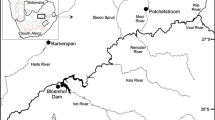Abstract.
We report on organochlorine pesticide and PCB concentrations in eggs of the little egret, Egretta garzetta, and the black-crowned night-heron, Nycticorax nycticorax, collected in 1993–1994, and on mercury, cadmium, and lead concentrations in feathers of 20-day-old nestlings collected from the same nests in 1994, from heronries near Pavia, northern Italy. Organochlorine pesticide and PCB residues were lower than those commonly associated with mortality and reduced reproductive success. As population levels of the species studied are not declining, these contaminants appear to have no significant adverse effect on reproduction in the heronries studied. DDE levels have decreased markedly in heron eggs since 1978. However, the presence of both DDT and β-HCH, albeit at low levels, is notable, given that these compounds were banned in Italy in 1978 and 1988, respectively. Relatively high levels of Hg, Cd, and Pb in feathers suggest birds in their colonies are exposed to these contaminants, although both Cd and Pb may relate more to external than to internal contamination.
Similar content being viewed by others
Author information
Authors and Affiliations
Additional information
Received: 1 February 1997/Accepted: 5 May 1997
Rights and permissions
About this article
Cite this article
Fasola, M., Movalli, P. & Gandini, C. Heavy Metal, Organochlorine Pesticide, and PCB Residues in Eggs and Feathers of Herons Breeding in Northern Italy. Arch Environ Contam Toxicol 34, 87–93 (1998). https://doi.org/10.1007/s002449900289
Published:
Issue Date:
DOI: https://doi.org/10.1007/s002449900289




